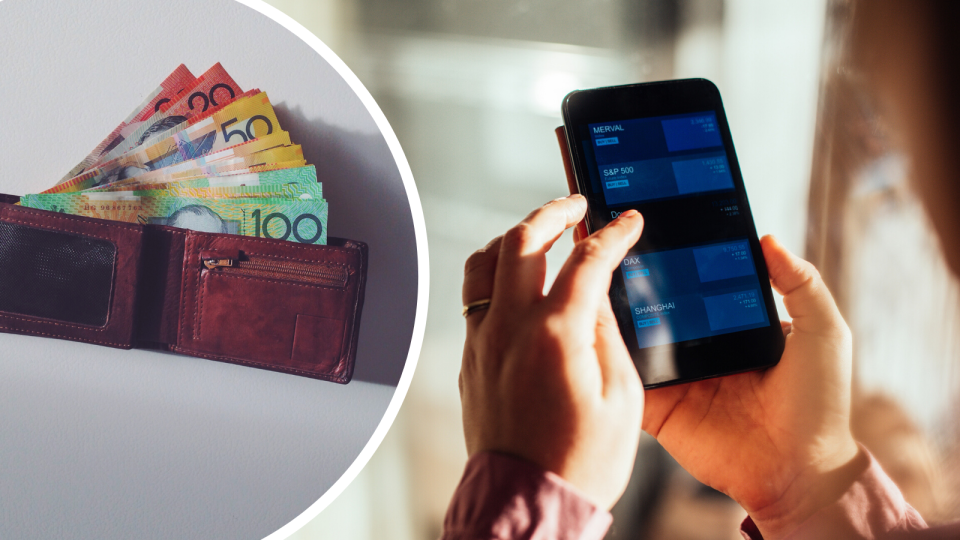It’s never been easier to win big and lose big time on the stock market

As a journalist, you try to avoid writing clichés like “roller coaster ride”, but trading on the stock market during the coronavirus economic crisis has been just like that: thrilling highs and terrifying dives.
The Australians stock market has never seen so much on-going volatility.
The upside is that, I would argue, there have never been more opportunities to make a quick buck on the market.
The downside is that many amateur or inexperienced investors are now trading like the pros and they’re getting absolutely slammed.
So, let’s take a closer look at tackling the share market as a novice.
Making money
The old saying you’ve got to have money to make money is still true I’m afraid.
For an ASX listed company the minimum order size for the first trade is $500 worth of shares. This is known as the minimum marketable parcel.
In a world of low wage grow and job insecurity, who has $500 spare to throw at the stock market?
The reality is though that if you’ve been able to hold onto your job during the COVID-19 recession, you should find it easier to save money (largely because prices across the economy are falling).
If you can save $50 a week, you should be able to buy your first stock within a few months. There’s also the potential to have a “portfolio” bunch of stocks over the space of a year.
Having $500 though also enables you to play the market, or buy and sell shares as they rise and fall on a daily basis.
You might, for example, buy the energy company Oil Search before the market closes one day, watch the price of oil spike overnight, and sell the next morning… making a sizeable profit.
Losing money
Ironically, the danger in making a profitable trade is that you’re tempted to be bigger and bolder with your next transaction.
This is when novice traders experiment with margin lending, or using existing shares as collateral and borrowing money to buy more shares.
This allows investors to buy many more shares than they otherwise would, greatly increasing their exposure to the market, and hence profitability.
The problem is that when the market turns, the losses on the downside can be quite overwhelming. New investors can risk losing everything.
Even straight-forward trades, without leverage, can land you in trouble.
It involves strange psychology but once you buy a stock, you’re very hesitant to accept a loss. Trust me on that. The stock starts to fall and you convince yourself it’ll come back.
When it doesn’t you start to panic, and making decisions under extreme stress is never a good idea.
Protect yourself
That’s when you need to consider some protection.
They’re called “limit orders” and basically set a price at which you’re automatically sold out of the market.
That is, while focused, you allow yourself to make a clear, objective decision about what price you should get out of a stock, and then hand it over to the computer to execute. It takes emotion out of the trade.
It can also help you to improve a profit on a trade.
Let’s say shares in a company are trading at $10 each and you think they’re going to drop slightly before rising again. You could place a limit order to buy shares at a price of $9.90, for example.
Paperwork, fees and taxes
I can’t leave you without warning you about the boring and financially painful side of investing.
Every time you trade shares you are issued with contract notes and, eventually, dividend statements.
You will need to take all of this to the tax man. He will then of course will ask you how much money you’ve earned, so he can work out your taxable income.
If you’ve made a profit, or profits, you’ll need to hand over a portion of that to the government.
You also have broker fees to consider.
You can see why you actually need to trade very successfully over a long period of time, with quite a large honey pot, in order to make day trading worth your while.
Even then there’s a lot of day-to-day stress, and of course overnight stress because fluctuations on European and US market overnight affect how the ASX opens up in the morning.
Up to you
But hey, if you want to give it a crack, far from me to get in the way. It’s a legitimate way to make money.
In all seriousness though, be careful. It’s a professional game. It’s not designed for beginners.
Follow Yahoo Finance Australia on Facebook, Twitter, Instagram and LinkedIn.

 Yahoo Finance
Yahoo Finance 